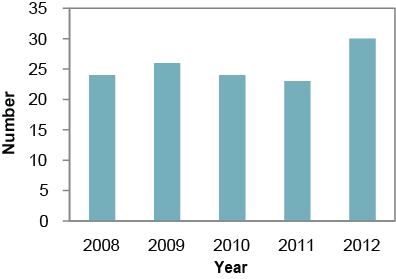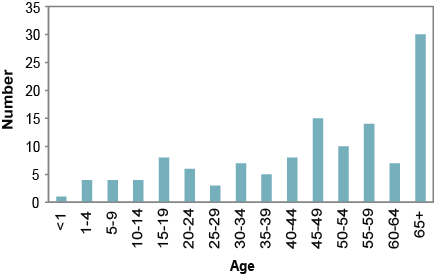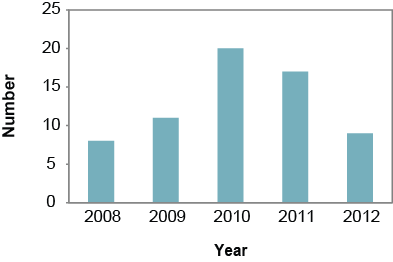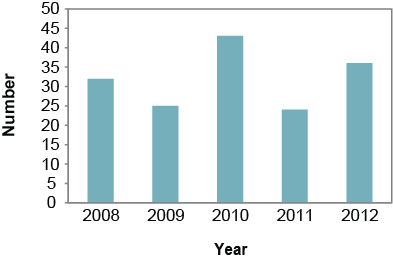Enteric (intestinal) disease statistics
- Enteric Disease Fact Sheet (PDF, 625 KB)
Enteric illnesses are a group of diseases that are associated with the ingestion of food or water contaminated by microorganisms and microbial toxins that attack the gastrointestinal tract.
Enteric disease facts
Common symptoms of enteric diseases include nausea, vomiting, diarrhea, abdominal cramps, fever, chills, and a loss of appetite and can appear 30 minutes to 10 days after exposure. Because many individuals mistake the symptoms of enteric illness, it is difficult to get an accurate number of cases of enteric illness. However, it is estimated that there are 2.2 million cases of enteric diseases in Canada annually.
The information below on campylobacteriosis, giardiasis, and salmonellosis in the Health Unit’s area was collected through the Integrated Public Health Information System (iPHIS) between 2008 and 2012 and was extracted in September 2013.
Campylobacteriosis
Campylobacteriosis is caused by campylobacter bacteria and is a common cause of diarrhea in humans. Symptoms of infection often include diarrhea, which can be bloody; cramps; fever; nausea and vomiting and usually appear 2 to 5 days following exposure.
Campylobacter bacteria are found on animals and birds, particularly young dogs or cats, and poultry. For people with compromised immune systems, campylobacter occasionally spreads to the bloodstream and causes a serious life-threatening infection. For infection to take place, the bacteria must be swallowed. That is why frequent handwashing, kitchen sanitizing and thorough cooking of meat, poultry, and eggs is so important.
Cases of campylobacteriosis
The number of reported cases of campylobacteriosis varied between 2008 and 2012. As shown in Figure 1, the highest number of cases was reported in 2012 with 30 cases, and the lowest number was reported in 2011 with 23 cases. The 65 years and over age group in the Health Unit’s area had the highest number of reported cases (30) between 2008 and 2012 (Figure 2).
A similar number of campylobacteriosis cases were reported among females (51%) and males (49%) from 2008 to 2012.
Figure 1. Number of reported campylobacteriosis cases in the Sudbury & District Health Unit area, 2008–2012

Table 1. Number of reported campylobacteriosis cases in the Sudbury & District Health Unit area, 2008–2012
| Year | Count |
|---|---|
| 2008 | 24 |
| 2009 | 26 |
| 2010 | 24 |
| 2011 | 23 |
| 2012 | 30 |
Source: Integrated Public Health Information System
Figure 2. Number of reported campylobacteriosis cases in the Sudbury & District Health Unit area, by age group, 2008–2012

Table 2. Number of reported campylobacteriosis cases in the Sudbury & District Health Unit area, by age group, 2008–2012
| Age | Count |
|---|---|
| Less than 1 year | 1 |
| 1 to 4 years | 4 |
| 5 to 9 years | 4 |
| 10 to 14 years | 4 |
| 15 to 19 years | 8 |
| 20 to 24 years | 6 |
| 25 to 29 years | 3 |
| 30 to 34 years | 7 |
| 35 to 39 years | 5 |
| 40 to 44 years | 8 |
| 45 to 49 years | 15 |
| 50 to 54 years | 10 |
| 55 to 59 years | 14 |
| 60 to 64 years | 7 |
| 65 years and over | 30 |
Source: Integrated Public Health Information System
Giardiasis
Giardiasis is an infection of the intestines caused by a tiny parasite (Giardia lamblia). Symptoms include diarrhea (or loose, greasy bowel movements), stomach cramps, bloating, severe flatulence (farting), weight loss and fatigue. However, some infected people show no symptoms. Symptoms generally appear within 3 to 25 days after exposure and children tend to be infected more frequently than adults.
Giardiasis is most commonly spread through water supplies that are contaminated with feces or contact with human or animal feces, but can also be spread from person to person through hand-to-mouth contact or through food that was handled improperly and became contaminated. Frequent handwashing is important as well as avoiding swallowing water while swimming.
The number of reported cases of giardiasis decreased in the Health Unit’s area between 2010 and 2012 (Figure 3). The highest number of reported cases was 20 in 2010 and the lowest number of reported cases was 8 in 2008. Not all cases are diagnosed; therefore, there are likely even more cases.
Figure 3. Number of reported giardiasis cases in the Sudbury & District Health Unit area, 2008–2012

Table 3. Number of reported giardiasis cases in the Sudbury & District Health Unit area, 2008–2012
| Year | Count |
|---|---|
| 2008 | 8 |
| 2009 | 11 |
| 2010 | 20 |
| 2011 | 17 |
| 2012 | 9 |
Source: Integrated Public Health Information System
Salmonellosis
Salmonellosis is the disease caused by salmonella bacteria and is one of the main causes of foodborne illness worldwide. It is commonly called “salmonella”. The bacteria is commonly found in the intestines of livestock and other animals. Symptoms of salmonellosis include sudden onset of cramps accompanied by diarrhea, nausea, fever, chills, headache and vomiting, and usually occur 12 to 36 hours after contact.
Salmonella is dangerous when it occurs in people with weak immune systems. An infection usually occurs when someone eats contaminated food or has person-to-person contact with another person’s unwashed hands. In addition, any raw animal foods (meat, poultry, eggs, unpasteurized milk, fish and shellfish) can carry the bacteria. To avoid infection, it’s important to wash your hands frequently, cook foods thoroughly, sanitize kitchen surfaces and utensils, and drink only pasteurized milk and milk products.
The number of salmonellosis cases in the Health Unit’s area varied between 2008 and 2012 (Figure 4). The highest number of cases was reported in 2010 with 43 cases, and the lowest in 2011 with 24 cases. However, as not all cases are reported, this number is likely an underestimate.
Figure 4. Number of reported Salmonella cases in the Sudbury & District Health Unit area, 2008–2012

Table 4. Number of reported Salmonella cases in the Sudbury & District Health Unit area, 2008–2012
| Year | Count |
|---|---|
| 2008 | 32 |
| 2009 | 25 |
| 2010 | 43 |
| 2011 | 24 |
| 2012 | 36 |
Source: Integrated Public Health Information System
Conclusion
Salmonellosis is the most common enteric disease in the Health Unit’s area, with 160 reported cases between 2008 and 2012, followed by campylobacteriosis, with 127 reported cases between the same time frame. Whereas the number of campylobacteriosis and salmonellosis cases have remained relatively consistent, the number of cases of giardiasis appears to be decreasing.
To prevent enteric diseases, avoid re-contamination within the kitchen after cooking is complete, perform proper kitchen sanitizing and thorough cooking of meat, poultry, and eggs are recommended. Drinking untreated water and unpasteurized milk should be avoided. Frequent and thorough hand washing is also recommended, especially before, during, and after food preparation, before eating, after using the toilet, and after handling animals, pet foods, and after cleaning animal enclosures.
Additional resources
- Communicable Disease Report for the Sudbury & District Health Unit Area 2000–2010
This item was last modified on April 19, 2016
